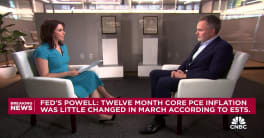Right on the heels of the National Association of Realtors rather glum report on the sale of existing houses during the fourth quarter of 2006 the U.S. Census Bureau and the U.S. Department of Housing and Urban Development released their monthly joint report on housing starts and housing permits for the month of January. The news was not quite terrible, but it didn't do much to raise optimism in the housing industry.
Building permits in January were issued at a seasonally adjusted annual rate
of 1,568,000 units. This is a drop of 2.8 percent since December and is 28.6
percent lower than January, 2006. Permits for single-family units were depressed
even more, down 4 percent since last month.
Housing starts in privately-owned developments were at a seasonally adjusted
annual rate of 1,408,000, a drop of 14.3 percent below the
revised December number of 1,643,000 and 37.8 percent lower than the rate in
January one year ago.
Regionally permits were up 9.7 percent and 10.2 percent in the Northeast and Midwest respectively but down 9.8 percent in the South. Year-over-year every region except the Northeast took a shellacking. The northeast dropped 8.1 percent in the number of permits issued and each of the other three regions was down between 29 and 34 percent.
Permits that had been pulled but for which no construction was started had declined in December but were up close to three percent in January. Nationwide 193,000 permits are sitting on the shelf.
The Northeast seems to be recovering a bit vis-à-vis housing starts. This figure was up 19.3 percent for seasonally adjusted single family home starts over December numbers but was still off 18.7 percent since last year. The other regions were still dropping last month with the West down a whopping 33.5 percent and the South down 8.5 percent. The Midwest was unchanged.
Builder confidence, however, improved according to the joint National Association of Home Builders and Wells Fargo Housing Market Index (HMI). The Index increased from 35 in January to 40, the highest level it has attained since last June. The HMI is based on responses from builders who answer survey questions about their perceptions of current single-family home sales, expectations for sales over the coming six months, and their estimates of current buyer traffic. Scores for each component along broad parameters of good, fair, or poor or, in the case of traffic as very low to very high are assigned a numerical value and then used to calculate the index. Any number over 50 for a single component or for the index as a whole indicates that more builders view sales conditions as good rather than poor.
The overall HMI hit bottom in September at a rating of 30. In February, however, the three indexes (corresponding to the three questions in the survey) all registered improvement. Builder perceptions of single-family home sales gained six points to 42, while the component measuring the traffic of prospective buyers rose five points to 31. The portion of the index gauging sales expectations for the next six months, which probably has the greatest impact on builder behavior, jumped over the 50 threshold for the first time since last June, posting a seven-point gain to 55.
NAHB President Brian Catalde said about the survey, "Builders are still
cautious as they continue to manage their inventory, but their assessments
of the demand side of the single-family market are improving. Every component
of the February HMI - present home sales, sales expectations for the next six
months and buyer traffic -- showed a significant positive uptick (sic) in February."
The HMI rose in all four regions in February, with the Northeast posting the
biggest gain of eight points to 46. Five-point gains were registered in the
Midwest and South, to 29 and 46, respectively, while the West moved up two points
to 35.







